Key takeaways:
- Selective mutism is an anxiety disorder that manifests in childhood, causing individuals to struggle with communication in social settings while often being expressive at home.
- Early intervention is crucial; timely support can significantly improve children’s social and emotional communication skills, fostering confidence and connections.
- Effective speech therapies include Cognitive Behavioral Therapy, Play Therapy, and Speech-Language Pathology, which help children address their anxiety around speaking.
- Gradual exposure and role-playing activities are key strategies that can build confidence and reduce anxiety in children learning to communicate.
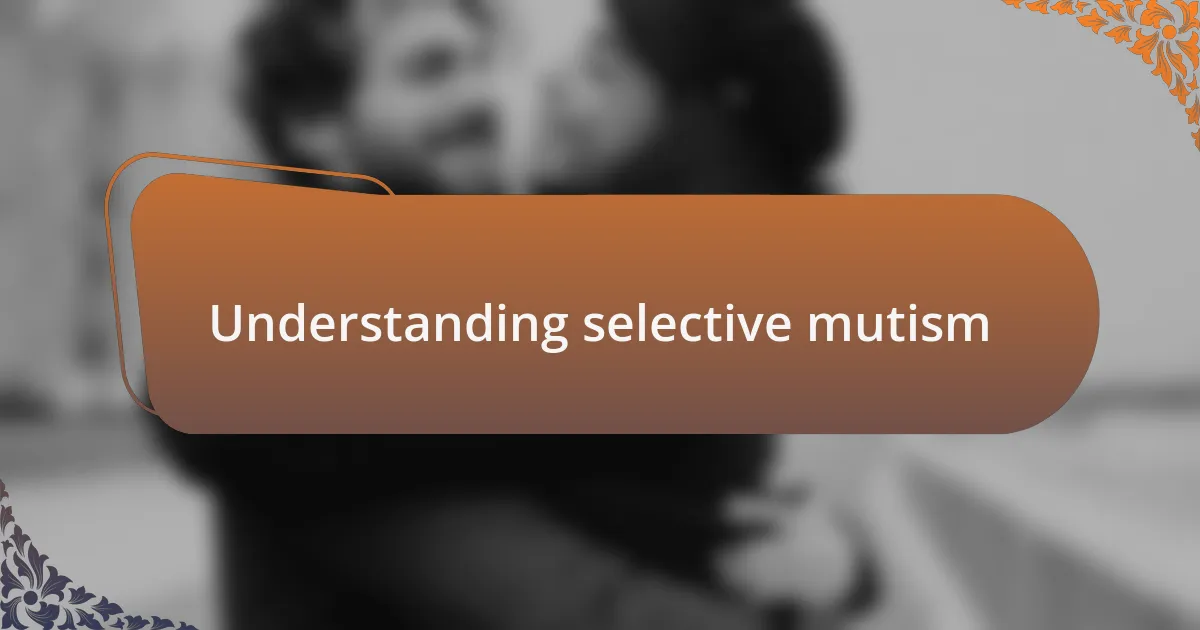
Understanding selective mutism
Selective mutism is more than just shyness; it’s an anxiety disorder. I remember the first time I realized this when I met a child who was vibrant at home but completely silent in social situations. It was heartbreaking to see how their voice seemed trapped, highlighting the intense internal struggle these individuals face.
When I think about selective mutism, I often wonder how many people truly understand its depth. It isn’t simply a refusal to speak; it’s an overwhelming fear that can make even simple interactions feel daunting. From my experience, seeing a child battle through this fear and emerge with their voice is nothing short of inspiring.
This condition typically manifests in early childhood and can linger, creating feelings of isolation. I once spoke with a parent who shared that her child would whisper at home but couldn’t utter a word in school. This contrast showcases the complexities of selective mutism, emphasizing that the silent struggle is as real and challenging as any other form of communication barrier.
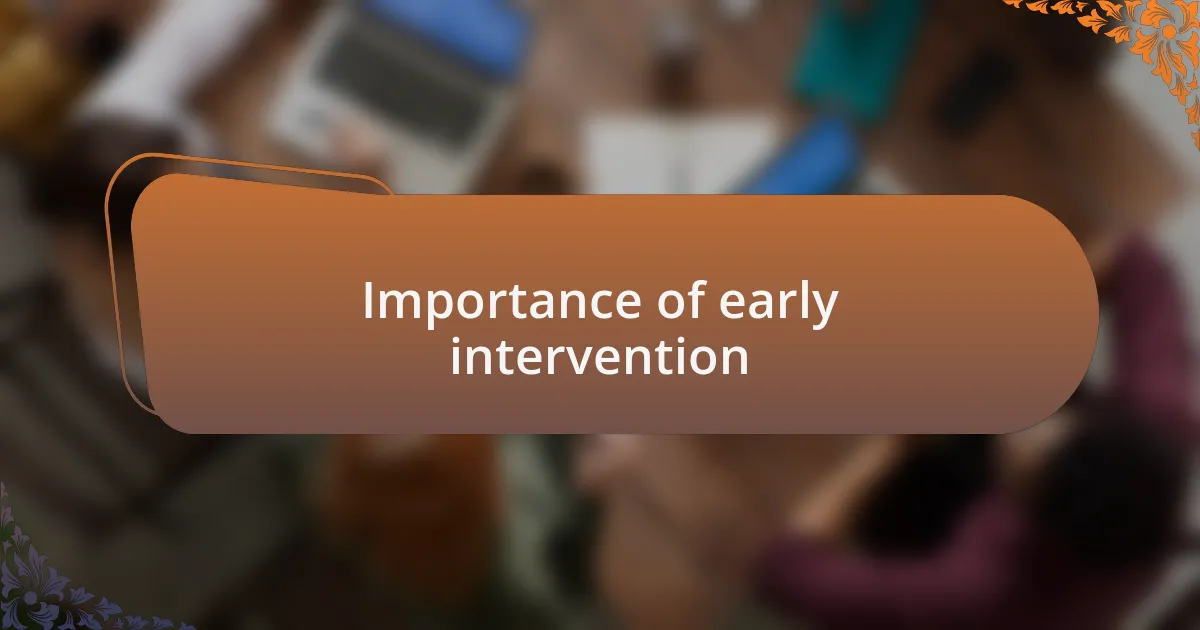
Importance of early intervention
When discussing the importance of early intervention for selective mutism, I can’t help but reflect on the stories I’ve encountered along the way. I remember a young girl whose world seemed to brighten the moment her parents sought help. They noticed that, with the right support, she began to connect with her peers at school, transforming her apprehension into newfound confidence. Watching her take small but significant steps towards expressing herself was a powerful reminder of how vital early intervention can be.
From my perspective, the earlier we address selective mutism, the better the outcomes—both socially and emotionally. I once met a boy who had been silent for years, yet after just a few sessions with a speech therapist tailored to his needs, he blossomed. This experience highlighted for me how critical it is for caregivers to recognize the signs early, so children can start to build the skills necessary to communicate effectively and naturally in different environments.
Early intervention is not just about speech; it’s about creating a safe space for children to explore their voices and emotions. It can lay the groundwork for healthy communication habits that last a lifetime. Have you ever wondered how different life could be if a child feels heard and understood from an early age? For many, that first step towards speaking can open up a world of opportunities and connections, encouraging a sense of belonging that is truly invaluable.
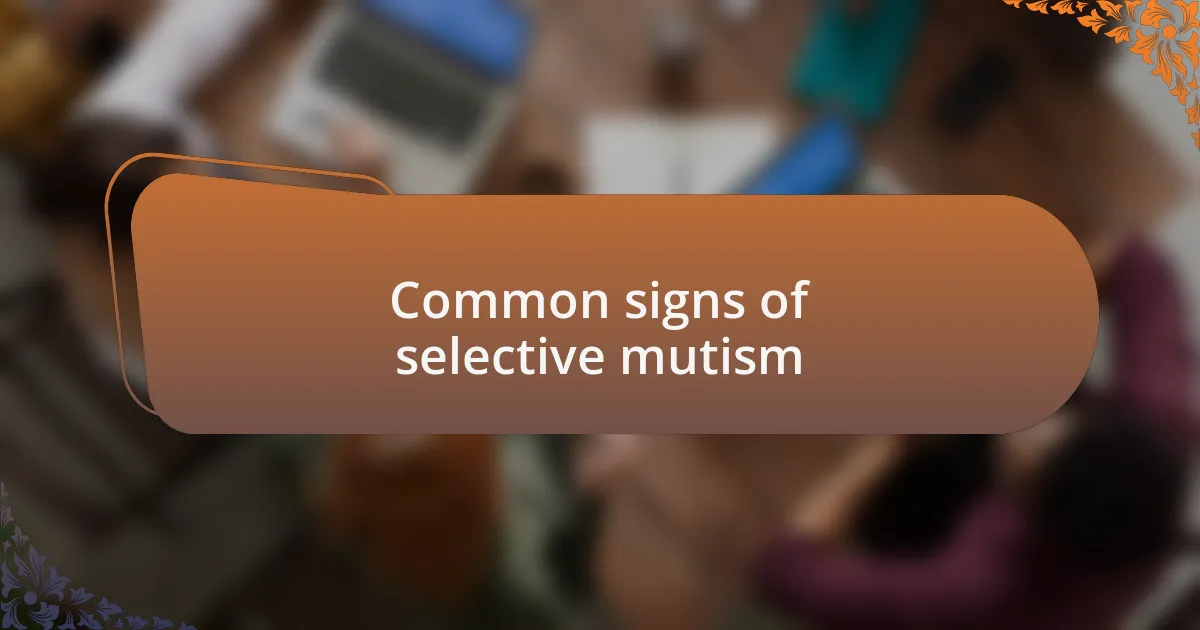
Common signs of selective mutism
Selective mutism can often go unnoticed, and commonly, the signs reveal themselves in subtle ways. For instance, I remember a child who would happily engage in play at home but froze when it was time to speak to teachers or classmates. This contrast often illustrates the core struggle many children face: their voices are stifled by anxiety in social situations. Have you noticed similar behaviors in a child you know?
Another prominent sign is a consistent inability to speak in certain settings, such as school or gatherings, despite the child having no difficulty communicating in familiar environments. This can lead to misunderstandings; I’ve seen parents mistakenly think their child is simply shy, not realizing that the silence comes from a much deeper place of fear. It’s heartbreaking to witness, isn’t it?
Physical symptoms often accompany the emotional turmoil of selective mutism, like avoiding eye contact or fidgeting when required to speak. I remember how a concerned parent shared how their child would often retreat to a corner during social events, visibly anxious and overwhelmed. This reaction can serve as a clear signal that something more than just shyness is at play and highlights the need for compassion and support. Have you seen these signs in action? It’s crucial to pay attention to these patterns, as they can guide us in seeking the right help.
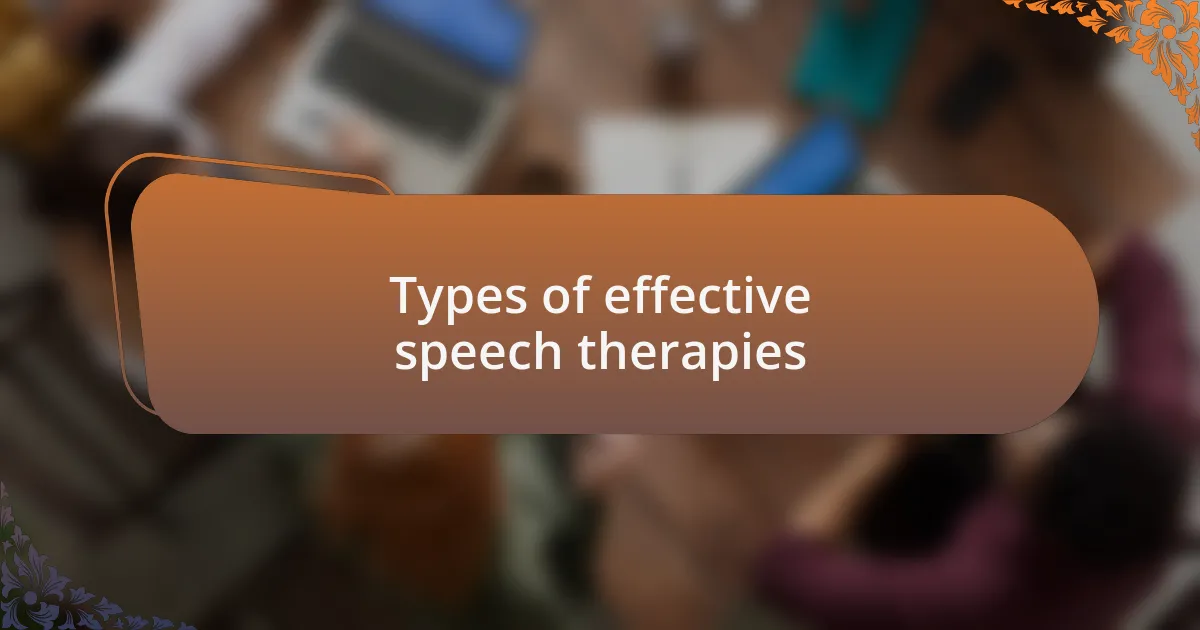
Types of effective speech therapies
When it comes to effective speech therapies, one of the most notable types is Cognitive Behavioral Therapy (CBT). I’ve personally witnessed its transformative power in helping children reframe their anxious thoughts about speaking. For instance, during a session I observed, a child learned to replace fearful thoughts with positive affirmations, which slowly bolstered their confidence to speak out loud in safe environments. Have you ever seen how a simple change in mindset can create a ripple effect?
Another impactful approach is Play Therapy, which taps into the natural way children communicate. I remember watching a therapist engage a reluctant child through imaginative play, allowing them to express feelings and practice speaking without the pressure of formal dialogue. This creative approach not only eased anxiety but also harnessed the child’s interest, making communication feel more like a fun activity rather than a daunting task. Have you considered how play can serve as a powerful tool for connection?
Lastly, Speech-Language Pathology often focuses specifically on the mechanics of speech in conjunction with emotional support. In my experience, therapists often incorporate techniques such as gradual exposure, where a child is encouraged to speak in increasingly challenging environments, starting from home with family members to school settings. This step-by-step process gradually builds comfort and fluency, transforming what once felt impossible into an achievable goal. Isn’t it inspiring to see such progress unfold?
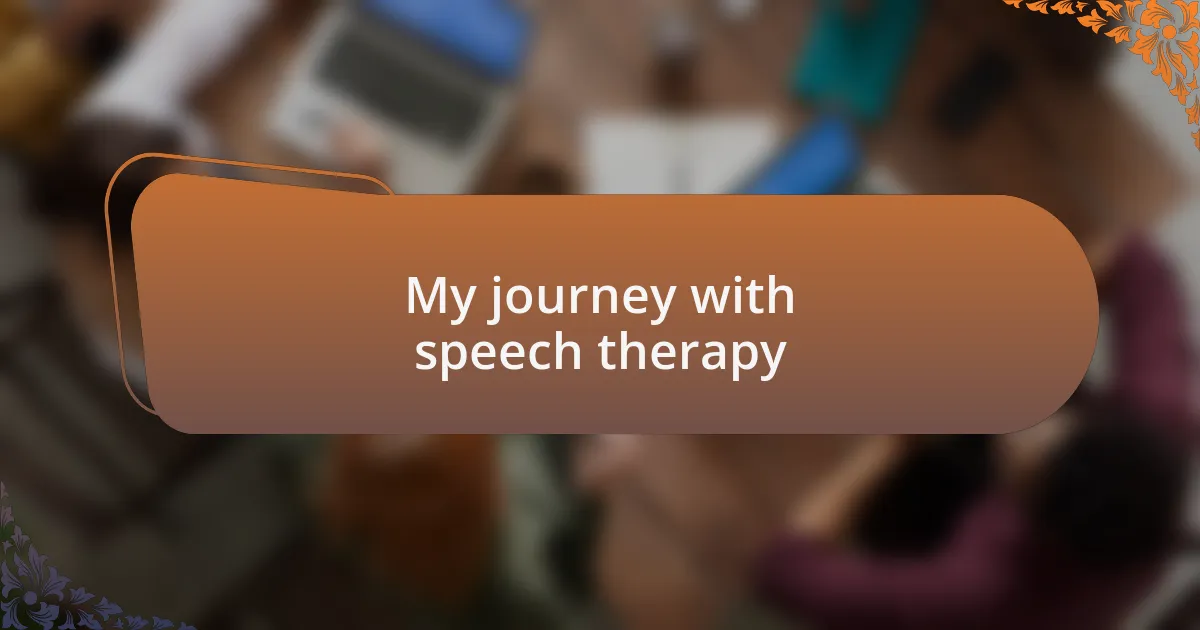
My journey with speech therapy
I still remember my first encounter with speech therapy. Walking into that cozy room, I felt a mix of excitement and trepidation. The therapist greeted me with a warm smile, instantly easing my nerves. It was a safe space where I learned to voice my thoughts without fear, and that feeling of safety was truly revolutionary for me.
Reflecting on those early sessions, I can vividly recall the moment when I managed to speak a full sentence for the first time. I had been practicing small phrases for weeks, but that day was different. The therapist cheered, and her genuine pride in my accomplishment sparked a sense of joy and motivation within me. How empowering is it to have someone believe in you during your most vulnerable moments?
As I progressed, I found that the most effective techniques were those that aligned with my interests. For example, incorporating storytelling helped me open up in ways I never anticipated. Each story became a stepping stone, leading me closer to fluency. Have you ever discovered that passion can be a remarkable catalyst for personal growth? It definitely was for me, shaping my journey through speech therapy into an adventure rather than a struggle.

Key strategies for success
Key strategies for success
One of the most effective strategies I discovered was the power of gradual exposure. I remember starting with simple, short interactions—like chatting with my therapist about my favorite book. This small step helped me build confidence over time. Isn’t it fascinating how facing our fears, even in tiny doses, can lead to monumental changes?
Another crucial element was the consistent use of role-playing activities. I distinctly recall one session where we acted out a café scenario, and suddenly, speaking felt less like a daunting task and more like a fun game. This playful approach allowed me to practice communication in a safe context, reducing anxiety. Have you ever noticed how engaging in a fun, imaginative process can sometimes unlock your true potential?
Additionally, setting realistic, achievable goals made a huge difference. I remember starting with the aim of speaking just one full sentence during each session. Those small victories were like building blocks, reinforcing my determination. It’s incredible how marking progress, no matter how minor it seems, can fuel one’s motivation. What goals have you set that seemed small but made a significant impact on your journey?